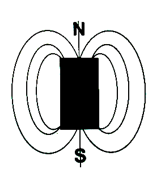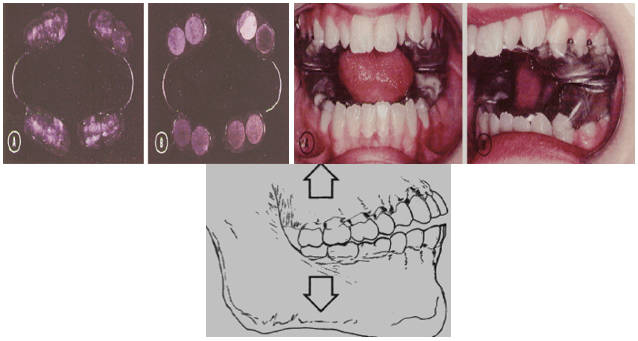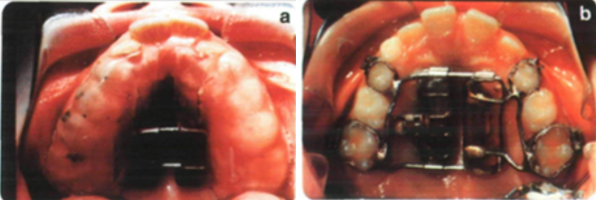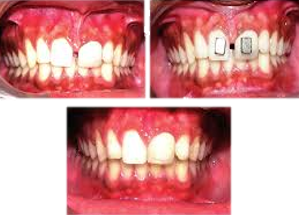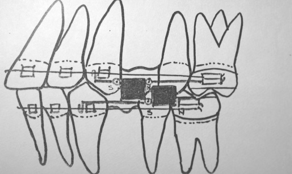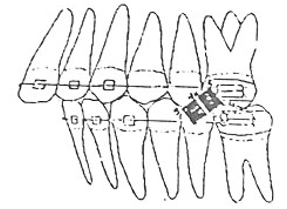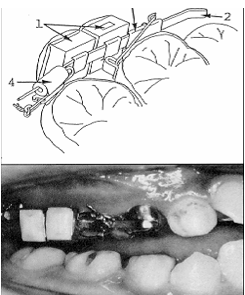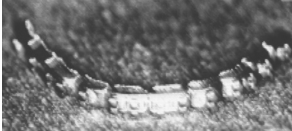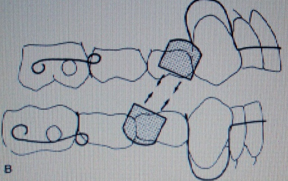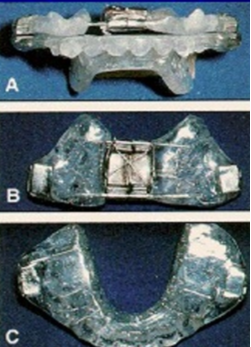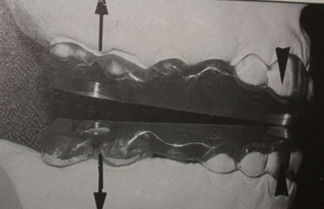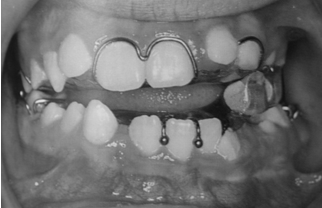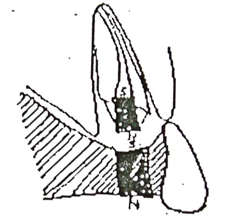Introduction
Magnetic force is an essential ingredient of nature. Magnets have generated great interest within dentistry. They have been used for various applications in orthodontics and prosthodontics. Earlier use of magnets was limited due to the unavailability of small size magnets, but after the introduction of rare earth magnets and their availability in smaller sizes, their use has increased considerably.1 The force they deliver can be directed, and they can exert their force through mucosa and bone as well as within the mouth. 2, 3 In orthodontics, they are used for intrusion of teeth, tooth movement along archwires, expansion, retention, in functional appliances and in the treatment of impacted teeth. 4, 5, 6, 7 There are various types of magnets used in the field of orthodontics with their advantages and disadvantages, along with their biological safety which has been discussed in this article. This article reviews various uses of magnets in the field of orthodontics.
Physical Properties of Magnets
All magnets have magnetic fields around them. The field emerges from one pole of the magnet conventionally known as ‘N’ pole and goes to other pole that is ‘S’ pole. Magnetic field can be either Static or Time varying.
Coulomb’s Law
All magnets obey this law which states that ‘force between two magnetic poles is proportional to their magnitudes (M) and inversely proportional to the square of the distance between them.’
The rare earth magnets give maximum force at short distance in comparison to elastics, which attain maximum force at more distance.
Curie point
Rare earth magnets tend to loose their magnetism at room temperature. To overcome this in orthodontics it has been combined with other element such as boron so that they can be incorporated into appliances and heat stabilized.
Pierre Curie observed that magnets tend to lose their properties at specific temperature which causes their domain to return to random distribution. This point of temperature is called Curie Point.
Important Intra-Oral Properties
Three dimensional centripetal orientation of attractive magnetic force.
Interruption of magnetic force line by Intermediate media.
No energy loss.
When two magnets are displaced in all the three planes they attract to a complete overlap. Centripetal attraction in all 3 spatial dimensions gives the operator complete teeth control on precise engagement.
Intra oral magnets are attracted to each other even if soft or hard tissues are interspersed in the gap between the two magnets eg: impacted canines.
When compared to elastics which shows force degradation & deteriorate over a short time, the rare earth magnets can maintain constant energy if protected against corrosion, curie temperature etc.
Rare earth magnets
High cohesive forces that is high resistance to demagnetization
Capable of producing high forces relative to their size due to the property of Magnetocrystaline Anisotropy
Strong permanent magnets made from alloys of rare earth elements. They are substantially stronger than ferrite or alnico magnets.
Anisotropy is the property of substances to exhibit variations in physical properties along different molecular axis.
Samarium Cobalt magnets (SmCo5 & Sm2Co17): Introduced by Becker in 1970. They have Superior magnetic properties compared to other rare earth magnets
Biologic concept of Magnetic force and Histologic changes
No subcutaneous changes as inflammation or adverse reaction under the magnets
Resorption of bone occurred under magnets after 3-4 weeks
Reduced chances of necrosis of bone as magnets make erythrocytes thinner
Magnetic forces inflicted a minimum of stress that induces various bio-chemical changes in a patient during orthodontic tooth movement.
Orthodontic
Fixed mechanotherapy- extraction & non-extraction
Relocating impacted teeth
Distal/mesialization of molars
Intrusion of posterior teeth in open bite cases
Closure of diastema
Uprighting and Derotation of teeth
Magnetic Brackets
Magnetic appliance for treatment of snoring in patients with and without sleep apnea
Extrusion of fractured teeth
Retainers (micro magnetic retainer)
Magnetic Appliances- Magnetic forces are used to bring about orthodontic tooth movement, Derived from magnets in attraction or repulsive mode
Appliances & other orthodontic uses of magnets
Active Vertical Corrector (AVC)
Developed by Dellinger in 1986, as a non surgical alternative treatment for Skeletal open bite
Can be fixed/removable and works as an energized bite block.
As it is energized only by the intermittent force from the muscles of mastication—electromagnetic field.
Superior to static bite block appliance
The energy system is obtained by the repelling force of Sm-Co magnets encased in a stainless steel capsule.
Constant force system results in rapid tooth movement than conventional appliances such as high-pull headgear, Activator bite block therapy.
Fixed Magnetic Appliance
Tooth Impaction
Vardimon, Graber, Drescher (1991) used Nd2Fe14B magnets to assist eruption of an impacted canine.
Procedure:-A mucoperiostal flap is raised uncover impacted canine — Vertical magnetic bracket/small magnet are bonded to the lingual crown surface.
The Force acts through a bigger intra oral magnet placed in removable appliance.
Advantage: simple, frictionless, short treatment time
CL-II mechanics in extraction cases
CL-II mechanics in non-extraction cases
Molar distalization (Gianelly(1988))
Bondemark & Kurol (1994)
Results: Coil are most comfortable & forces were more constant than magnet forces.
Magnetic edgewise brackets
Functional Orthopedic Magnetic Appliances (FOMA)
Magnetic activator device
Developed by Darendilier (1993)
MAD I – used for correction of mandibular deviation
MAD II – for Cl II corrections
This removable appliance postures the mandible forward.
Attractive force was about - 600 gms.
Cl-II malocclusion corrected by posterior movement of upper jaw and forward movement of mandible.
First 6 months – full time.
Next 2 months – night time only.
It consists of an upper and lower Hawley’s framework carrying a rectangular magnet in premolar region.
The Propellant Unilateral Magnetic Appliance (PUMA)
Magnetic twin block (Clark (1996))
• SmCo magnets are embedded in the inclined surface of the twin block in attraction mode.
Extrusion of fractured teeth
Discussion
Early attempts at using magnets for intraoral uses were unsuccessful, mainly because of the large size of magnets at that time and the inadequate forces that they provided. However, since the introduction of rare earth magnets, such as samarium-cobalt and neodymium-iron-boron, it has become possible to produce magnets with small enough dimensions to be used in dental applications and still provide the necessary force. Introduction of rare earth magnets into orthodontics for various therapeutic uses is very recent. Within 10 years, magnetic forces have gained good acceptance in correction of skeletal and dental defects. The main advantage with magnets is operator controlled. It eliminates patient cooperation. Conceivable risks of harmful biological effects are negligible with magnets. It is easy to maintain oral hygiene. Compared with other conventional orthodontic methods of force delivery systems magnets are cost effective. Their high cost can overcome by reusing it after sterilization and recycling. These magnets after recycling have not shown much change in their force system. Magnets suffer from tarnish and corrosion. Tarnish and corrosion products are cytotoxic. Tarnish and corrosive nature is prevented by casing them in stainless steel jackets (or) giving parylene coat. Magnets exert continuous forces with less friction, compared to other conventional orthodontic appliances. Teeth movement are bodily in nature and treatment time is shorter. They can be associated along with fixed, removable and functional appliances. Uses of extraoral forces are minimized and anchorage control with them is very precise. Magnets can be used to give predictable forces in either attraction or repelling mode. The orthodontic stimuli provided by the magnetic appliance have reduced the systemic stress reaction seen with conventional orthodontic mechanotherapy. The incidence of periodontal disturbances, root resorption and caries are considerably low and foremost no discomfort.
Conclusion
Superiority of results with magnetic appliances as compared to those of conventional orthodontic appliances is still in dispute. The evidence currently suggests that the risk of harmful biological effects are negligible. High cost can be overcome by reusing after sterilization & recycling.


